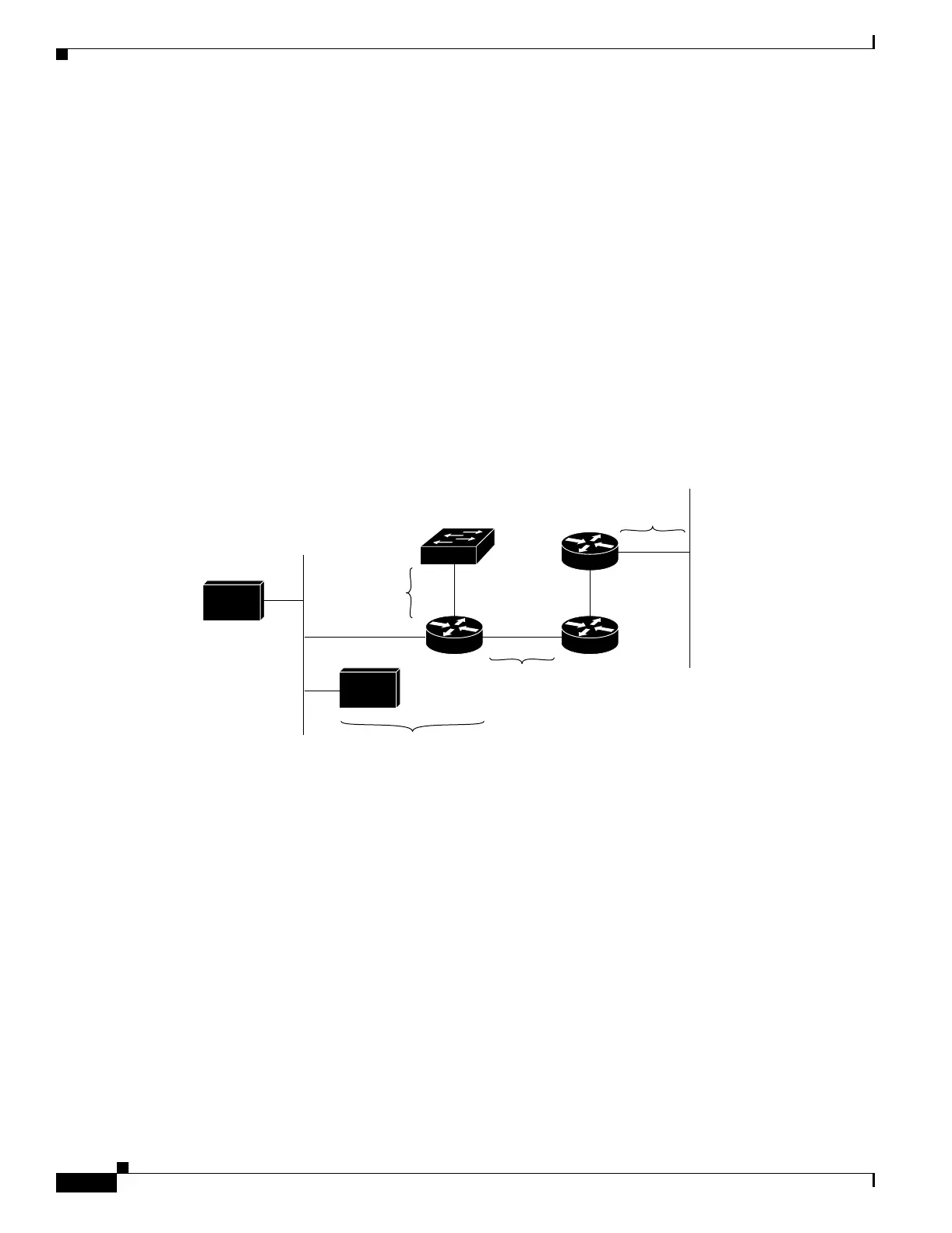31-2
Catalyst 3750 Metro Switch Software Configuration Guide
78-15870-01
Chapter 31 Configuring IP Multicast Routing
Understanding Cisco’s Implementation of IP Multicast Routing
Understanding Cisco’s Implementation of IP Multicast Routing
The Cisco IOS software supports these protocols to implement IP multicast routing:
• Internet Group Management Protocol (IGMP) is used among hosts on a LAN and the routers (and
multilayer switches) on that LAN to track the multicast groups of which hosts are members.
• Protocol-Independent Multicast (PIM) protocol is used among routers and multilayer switches to
track which multicast packets to forward to each other and to their directly connected LANs.
• Distance Vector Multicast Routing Protocol (DVMRP) is used on the multicast backbone of the
Internet (MBONE). The software supports PIM-to-DVMRP interaction.
• Cisco Group Management Protocol (CGMP) is used on Cisco routers and multilayer switches
connected to Layer 2 Catalyst switches to perform tasks similar to those performed by IGMP.
Figure 31-1 shows where these protocols operate within the IP multicast environment.
Figure 31-1 IP Multicast Routing Protocols
Understanding IGMP
To participate in IP multicasting, multicast hosts, routers, and multilayer switches must have the IGMP
operating. This protocol defines the querier and host roles:
• A querier is a network device that sends query messages to discover which network devices are
members of a given multicast group.
• A host is a receiver that sends report messages (in response to query messages) to inform a querier
of a host membership.
A set of queriers and hosts that receive multicast data streams from the same source is called a multicast
group. Queriers and hosts use IGMP messages to join and leave multicast groups.
Any host, regardless of whether it is a member of a group, can send to a group. However, only the
members of a group receive the message. Membership in a multicast group is dynamic; hosts can join
and leave at any time. There is no restriction on the location or number of members in a multicast group.
A host can be a member of more than one multicast group at a time. How active a multicast group is and
Host
Host
PIM
IGMP
CGMP
DVMRP
Internet
MBONE
Cisco Catalyst switch
(CGMP client)
44966

